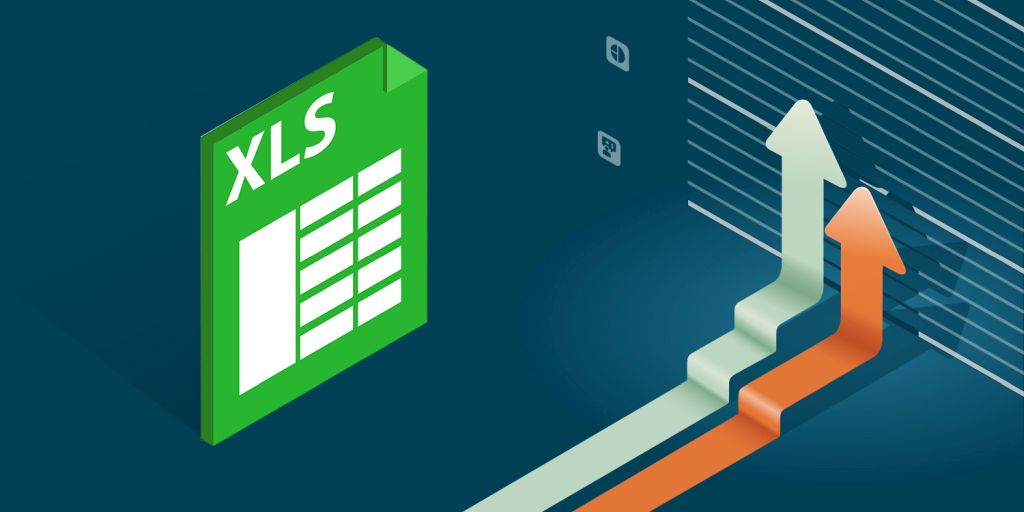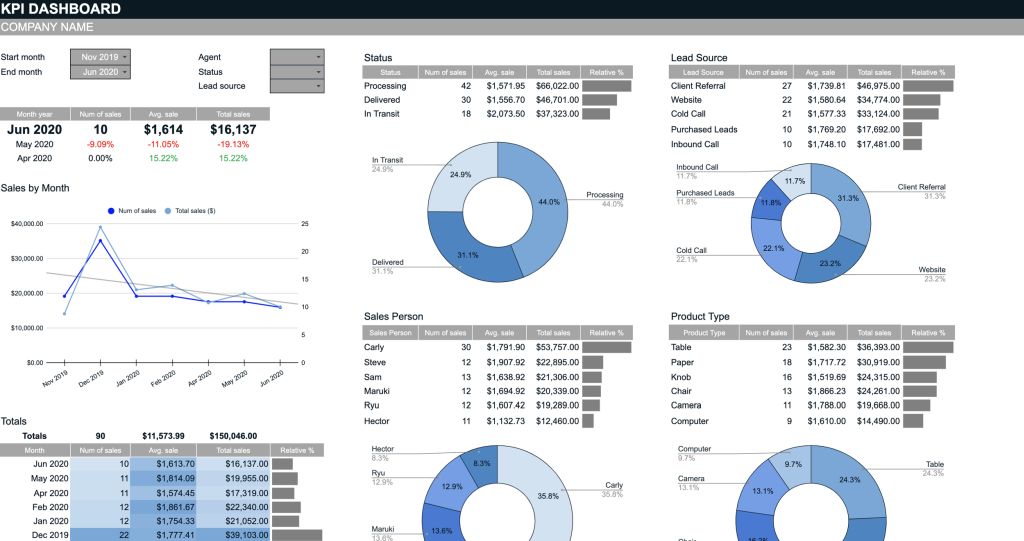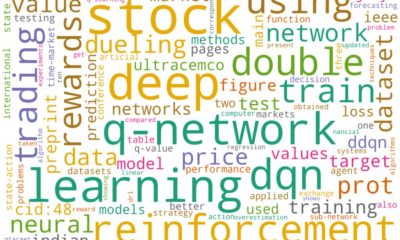Excel for Business
Mastering Chart Elements in Excel to Unlock Better Data Visualization

Charts are more than just decorative visuals—they’re powerful tools for translating raw data into digestible insights. However, the key to building effective charts lies in mastering chart elements. By understanding and utilizing these elements, you can ensure that your charts not only look professional but also convey critical information with clarity and precision.
This guide dives deep into the importance of chart elements in Excel, their practical applications, and how to use them effectively for better data representation.
Why Chart Elements Matter in Excel
When presenting data in Excel, charts can help bring numbers to life. However, without well-placed chart elements, your visualizations may fall flat. Chart elements like titles, axes, and legends add context, guide interpretation, and help communicate your findings effectively.
Imagine a chart without a title—it might look polished, but its purpose could remain a mystery to viewers. Or think about data points plotted without axis labels—they leave readers guessing about the chart’s scale and significance. These seemingly simple components make a world of difference in how information is received and understood.
By leveraging chart elements effectively, you can improve readability, strengthen your message, and even guide smarter decision-making processes.
Understanding the Basic Chart Elements
Excel provides many chart elements by default. Each comes with its unique purpose, ensuring you have the tools needed to tailor your visuals.
1. Titles
A chart’s title immediately informs your audience of its focus. Whether highlighting quarterly sales revenue or comparing regional audience growth, a clear title sets the stage.
To add a chart title in Excel:
- Select the chart.
- Navigate to the Chart Tools ribbon.
- Click Add Chart Element > Chart Title. Customize the text to reflect your chart’s main message.
2. Axes
Axes are the backbone of most charts—they provide a frame of reference for your data. The horizontal axis usually represents categories, while the vertical axis determines the numerical values.
For maximum impact:
- Label your axes clearly. For example, instead of “X-axis” use “Months” or “Categories.”
- Experiment with formatting options like bolding critical axis labels or adjusting the scale to emphasize specific data ranges.
3. Legends
A legend functions as the “key” to your chart. It tells users what different colors, patterns, or line styles represent.
For instance, in a sales performance chart, legends might differentiate product categories or sales regions. To optimize your chart legends:
- Position them thoughtfully—try the top-right corner for minimal chart interference.
- Use concise labeling to reduce clutter and confusion.
4. Data Labels
Data labels bring specificity to your chart. Located near the data points, they showcase exact values, making comparisons effortless.
Use data labels when:
- Readers need exact figures (e.g., market share percentages).
- The data includes many overlapping points where decoding raw visuals is challenging.

Exploring Advanced Chart Elements
For more complex data visualizations, Excel offers advanced chart elements. These features help convey additional insights without overwhelming your audience.
1. Trendlines
Trendlines show patterns over time, making it easier to track growth or decline. For example, a trendline over quarterly profits can reveal the health of your business at a glance.
To add a trendline:
- Right-click a data series in your chart.
- Choose Add Trendline, then customize it to suit your needs (e.g., linear, exponential).
2. Error Bars
Error bars visualize variability and uncertainty in data. They’re often used in scientific experiments or surveys to highlight confidence intervals.
You can customize error bars by:
- Navigating to Add Chart Element > Error Bars.
- Selecting standard deviation, percentage, or fixed-value bars.
3. Data Tables
Data tables provide a summary of your chart’s data directly within the chart. They’re particularly helpful when numerical context is just as important as the visuals.
Easily include a data table:
- Select your chart.
- Go to the Chart Elements menu and enable Data Table.
4. Secondary Axes
Secondary axes allow you to show two datasets on separate scales within the same chart. For instance, you could show sales volume (primary axis) alongside revenue percentage growth (secondary axis).
To include a secondary axis:
- Select the desired dataset.
- Use the Format Selection pane for the series, enabling the option to plot on a secondary axis.
Using Excel’s Chart Tools
Excel’s Chart Tools tab provides a user-friendly way to add, modify, and customize chart elements. Here’s a quick step-by-step guide to enhancing your chart using these tools.
- Select Your Chart
Click on the chart you want to edit. Once selected, the Chart Tools contextual tab appears in the Ribbon.
- Add or Remove Chart Elements
Use the Add Chart Element dropdown menu to experiment with different components like titles, legends, and gridlines.
- Format Your Elements
Right-click any chart element to open additional formatting options. For example:
- Adjust font sizes to match your presentation style.
- Change data point colors for better contrast.
Best Practices for Chart Elements
Even with the best tools, bad chart design can lead to misinterpretation. Follow these tips to create clear and impactful charts.
1. Keep It Balanced
Avoid overloading your chart with elements. Too many data labels, colors, or gridlines can make your graphic overwhelming. Aim for simplicity!
2. Align Elements with Your Audience
If your audience is familiar with the data, minimal elements may suffice. For general audiences, more context—like detailed legends—might be necessary.
3. Use Consistent Formatting
Maintain uniform font sizes and alignments for a polished look. Consistency builds credibility and ensures clarity.
Real-Life Applications of Chart Elements
To illustrate the importance of chart elements, consider these scenarios.
Before-and-After Examples
A new sales team might struggle to understand a complex bar chart. Adding well-labeled axes, a legend, and data labels transforms it into a tool they can successfully interpret.
Business Impact
A marketing team used trendlines in Excel to predict seasonal dips, enabling them to adjust campaign strategies and boost revenue during slow periods.
These real-life examples highlight how small changes in chart design can lead to clearer communication and better business outcomes.
Wrapping Up
Mastering chart elements in Excel unlocks the ability to present data in meaningful, visually appealing ways. From basic titles and labels to advanced components like trendlines and data tables, each element plays a role in telling your story.
Building stronger, smarter charts starts with understanding and applying these tools. Test them out in your next Excel project to take your data visualizations to the next level. The better your charts are, the more impactful your data-driven decisions will be.

Excel for Business
Create Smart Calculators in Microsoft Excel to Make Your Work Easier

Microsoft Excel is more than just a spreadsheet tool; it is a powerful platform for building customized calculators that can make your daily tasks easier and more efficient. Whether you want to track your monthly budget, calculate business expenses, estimate project costs, or analyze performance metrics, Excel gives you all the flexibility you need. With simple formulas, data validation, and conditional formatting, you can turn plain tables into interactive tools that save time and reduce human error. Once you learn a few basic functions, you will be able to design calculators tailored to your workflow and simplify complex calculations with ease.
Understanding the Basics of Excel Formulas
Excel formulas are the foundation of any calculator you create in the program. They allow you to perform mathematical operations, analyze data, and automate repetitive tasks. The most common formulas include SUM, AVERAGE, MIN, MAX, and IF, which help you calculate totals, averages, and conditional results. For example, =SUM(B2:B10) quickly adds all numbers in that range, while =IF(A1>100,”Yes”,”No”) lets Excel make decisions based on data. You can also combine multiple functions for more advanced results, such as =AVERAGEIF() or =SUMPRODUCT(). Once you understand how to use cell references, parentheses, and operators like +, -, *, and /, you can build powerful formulas that process information automatically. Learning these basics is the first step to turning Excel from a simple spreadsheet into a dynamic calculator that saves time and boosts productivity.
Using Percentages and Conditional Formatting for Smarter Insights
Percentages and conditional formatting are powerful tools in Excel that help you visualize and analyze data effectively. By combining these features, you can transform plain numbers into meaningful insights. For example, you can calculate what percentage of your budget is spent on different categories or track progress toward a financial goal. Conditional formatting lets you highlight cells automatically based on specific rules, such as marking values above 80% in green or below 50% in red. This makes trends and potential issues easy to spot at a glance. The same approach can be used in various contexts, including research and health tracking tools like a peptide dosage calculator, where percentage-based calculations help ensure precise and consistent measurements. Mastering these functions allows you to make data-driven decisions faster and more accurately while keeping your spreadsheets visually clear and informative.

Automating Calculations with Built-In Excel Functions
Excel’s built-in functions allow you to automate calculations and reduce manual work. Instead of entering numbers and formulas repeatedly, you can use functions like SUM, AVERAGE, IF, and VLOOKUP to perform tasks instantly. For example, =SUM(B2:B20) adds all values in a range, while =IF(A2>100,”High”,”Low”) categorizes data automatically. More advanced tools like XLOOKUP, INDEX, and MATCH help you pull specific data from large tables with ease. You can also use date and time functions such as TODAY() or NOW() to update information automatically. This approach is especially useful when creating dynamic reports, expense trackers, or dosage estimators that need to update regularly. By learning how to use these built-in features, you can transform Excel into a smart system that calculates, updates, and analyzes data on its own—saving you hours of repetitive work and improving accuracy in every project.
Tips for Designing User-Friendly Excel Calculators
Designing a user-friendly Excel calculator means creating a tool that is easy to navigate, visually clear, and efficient. Start by organizing your layout so inputs, outputs, and results are clearly separated. Use consistent colors, bold headers, and cell borders to make key sections stand out. Data validation helps prevent errors by limiting what users can enter into specific cells, while drop-down menus can simplify complex choices. Always label your inputs clearly, for example, “Enter Amount” or “Select Percentage,” so users know exactly what to do. Adding brief notes or instructions can make your calculator even more intuitive. You can also use conditional formatting to highlight results automatically when certain conditions are met. For example, values above a target can turn green, and those below can appear red. A well-structured and visually appealing calculator makes Excel not only functional but enjoyable to use for budgeting, planning, or professional data analysis.
Conclusion
Creating calculators in Microsoft Excel is a practical way to simplify your daily work and improve efficiency. Whether you use it for budgeting, tracking expenses, or managing data, Excel gives you the flexibility to design tools that fit your specific needs. By combining simple formulas, clear layouts, and basic automation, you can save time and minimize errors in your calculations. Once you understand how to organize your data and apply the right functions, you will see how powerful Excel can be. It is not just a spreadsheet tool but a smart solution for turning numbers into insights.
Excel for Business
How to Sort Data Horizontally in Excel

Sorting data in Excel is one of the most fundamental tasks for data analysts and business owners. While most are accustomed to the default vertical sorting, sometimes there’s a need to reorganize data horizontally. Whether it’s for comparing monthly sales, displaying rankings across columns, or custom analyses, horizontal sorting can provide clarity and precision.
This post breaks down the exact ways to sort data horizontally in Excel, step by step. By the end, you’ll be equipped with several actionable methods to streamline your workflow.
Understanding the Challenge
Standard Excel functionality focuses primarily on vertical sorting, where data is ordered top-to-bottom within a column. While this is effective in many scenarios, it falls short when you need to reorder data side-by-side along rows in a table.
For instance, if you’re comparing product sales across several months and need to rank them from highest to lowest horizontally, vertical sorting just won’t cut it. That’s where horizontal sorting comes into play.
Here are four methods to sort data horizontally, covering everything from basic functions to advanced VBA scripts.
Techniques for Sorting Data Horizontally
1. Using the TRANSPOSE Function
The TRANSPOSE function allows you to flip a range of data from vertical to horizontal (and vice versa). It’s a quick way to prepare data for horizontal sorting.
Steps to use TRANSPOSE for horizontal sorting:
- Select the data range intended for sorting (e.g., products and sales figures listed vertically).
- Copy the data (Ctrl+C or Cmd+C) and Paste Special into an empty area of the sheet. Choose “Transpose” in the Paste Special menu to convert the data from vertical to horizontal.
- Apply Excel’s default sort feature to reorder the data horizontally.
- Use the TRANSPOSE function again if necessary to return the rearranged horizontal data back into its original vertical format.
Limitations and tips:
- If your dataset includes formulas, TRANSPOSE may not work seamlessly. Be prepared to adjust the formulas manually.
- Always create a duplicate of your data before performing transformations to avoid losing valuable information.

2. Pivot Tables for Horizontal Sorting
Pivot Tables are invaluable in Excel for organizing and analyzing large datasets. While they’re commonly used for summarizing data vertically, they can also support horizontal sorting.
Steps to create a Pivot Table for horizontal sorting:
- Select your dataset and go to Insert > Pivot Table.
- Drag the category or labels you want to sort into the Columns area of the Pivot Table.
- Place numerical data (e.g., sales figures) into the Filter or Value area.
- Use the sort option within Pivot Tables, choosing ascending or descending order.
Why Pivot Tables work:
- They allow for complete customization of data views.
- You can filter and group data while pivoting rows to columns for horizontal arrangement.
3. The Power of INDEX and MATCH
The INDEX and MATCH functions are staples in Excel for locating and rearranging data. Together, they create a flexible system for sorting horizontally.
Using INDEX and MATCH for horizontal sorting:
- Write an INDEX formula to pull specific row information based on criteria.
Example formula:
=INDEX(SalesData, 1, MATCH(LargestValue, SalesDataRow, 0))
- Combine INDEX with MATCH to dynamically reorder row data into a new order horizontally.
Practical example:
Suppose you want to rank monthly sales across columns horizontally. Use MATCH to find the corresponding values in descending order and INDEX to reorganize the row data.
Best practices:
- Use a helper row when sorting multiple rows of data horizontally.
- Lock the cell references with absolute references to maintain accuracy when copying formulas across cells.
4. VBA Scripts for Advanced Horizontal Sorting
For advanced users, VBA (Visual Basic for Applications) scripting takes horizontal sorting to the next level. It automates repetitive sorting tasks and offers flexibility that traditional Excel features may lack.
Sample VBA script for horizontal sorting:
- Press `Alt + F11` to open the VBA editor.
- Select Insert > Module to create a new module.
- Paste this code into the module:
“`
Sub HorizontalSort()
Dim rng As Range
Set rng = Selection
rng.Sort Key1:=rng.Rows(1), Order1:=xlAscending, Orientation:=xlSortRows
End Sub
- Close the VBA editor and return to your worksheet. Select the range of data you wish to sort horizontally, then run the macro (Alt + F8).
Key benefits of VBA scripts:
- Automates repetitive sorting tasks, saving time.
- Handles large datasets without manual intervention.
Word of caution:
- Test VBA scripts on backup copies of your data to ensure no unintended changes occur.
Putting It All Together
Sorting data horizontally in Excel might seem daunting at first, but these techniques simplify the process. Each method—from basic TRANSPOSE functions to advanced VBA scripting—caters to different levels of expertise and types of data.
When deciding which technique to use, consider the complexity of your dataset and the frequency of sorting required. For quick solutions, TRANSPOSE and INDEX/MATCH work wonders. For routine or large-scale tasks, Pivot Tables and VBA scripts ensure efficiency and accuracy.
Excel’s versatility allows for customization, so don’t hesitate to experiment until you find the workflow that best suits your needs. And remember, even small improvements in data organization can lead to smarter decisions and more impactful analysis.
If you found these tips helpful, explore more Excel how-tos and shortcuts on our blog! Subscribe to receive regular updates and unlock the full potential of Excel in your professional life.
Meta data
Meta title
How to Sort Data Horizontally in Excel
Meta description
Learn 4 expert methods to sort data horizontally in Excel, including TRANSPOSE, Pivot Tables, INDEX/MATCH, and VBA scripting. Streamline your workflow today!
Excel for Business
Interactive Excel KPI Dashboard

Slicers is a very useful but underutilized tool in Excel. You can dynamically filter your pivot tables and pivot charts with animated buttons, aka slicers. For more information on slicers, you can check this short article.
Now let’s see how to build an Interactive Excel KPI Dashboard using pivot table tools:
I prepared a summary data for 4 departments; welding, cutting, assembly and packing. KPI’s for these 4 departments are selected as efficiency, productivity and scrap rate. Data set includes values for 12 months (4x3x12=144 rows). Here is how data set looks:
Select all the data and insert a pivot table. Arrange fields as shown below (Don’t look for Rest field at this point. We are going to add it in next step):
Click on the pivot table to activate it and add a calculated field from the menu shown below:
Set calculated field parameters as shown below and we will have an additional field in our pivot table to use for our charting needs:
Set KPI filter as “Productivity” and make 2 copies of the pivot table (by copy and paste). Set KPI filter for those tables as “Efficiency” and “Scrap Rate”. Here is how it is supposed to look:
Insert a donut chart for each of these pivot tables. Cut them and paste them to another sheet. Format your charts to look like this:
To do this, right-click on any gray button on the chart and select “Hide All Field Buttons on the Chart”. Delete chart title and legend. Then click on the donut and set shape outline to “No Fill”. Set shape color separately by clicking on them and selecting color.
Now make another copy of the first chart and arrange fields as shown below:

When finished, make 2 copies of this pivot chart too:
Now merge 3 cells and type “=B5” (without bracelets). B5 is the cell that contains result value of first pivot table (you can see from previous picture). Make sure to disable gridlines here. Then select your merged cell and copy it. Then paste it, as linked picture, to the sheet that has your donut charts. And drag it over related chart.
We are finished our donut charts at this point. It is time for our column charts. We need a 3 column data table for each of our column charts. Here is how I do it:
Place a 3 column grid just under the second set of pivot tables. First row will contain column titles. First column will contain month names. Remaining 2 columns will be filled by formulas. Here are the formulas:
Result Column Formula:
=SUMIFS(Sheet1!$E:$E;Sheet1!$A:$A;Sheet2!$A$14;Sheet1!$B:$B;Sheet2!$B$11;Sheet1!$D:$D;Sheet2!$A20)
This formula fetches result values based on department and KPI values selected on the pivot table above and month name in first column. You can see how to use this function from here SUMIFS FUNCTION.
Selection Column Formula:
=IF(A20=$A$15;B20;NA())
This formula checks selected month on the pivot table above and shows result value from 2nd column if month matches. If it doesn’t match, it shows #N/A.
Here are the tables I prepared:
Now select first table and insert a column chart. For formatting:
- Double-click on the orange column and set is as secondary axis.
- Set Series Overlap and Gap Width to 100%
- Delete both axes, chart title, legend and grid lines.
- Change column colors and set Shape Outline for the chart as “No Fill”
Here is how your chart should look like after all these make-up:
Do the same for other tables (other KPI’s), you can also copy chart formatting to do this faster. Then place these chart next to your donut charts:
Now comes the interactivity part. Click on your first donut chart and insert a slicer from INSERT ribbon. Select Month Name as field. Make sure settings are made as shown below:
You should check whether your slicer works correctly, by clicking on its buttons. If it doesn’t change charts, it is most likely because of report connections. You can correct this issue from there. Insert slicer for other KPI’s (chart pairs) too.
Now customize you slicers as a 3×4 button grid with button height and width as 1,2cmx1,2cm. Change colors to match with your charts. You can see how to do this from Customize Slicers. Here is how it should look like:
Add a final slicer for departments. You can do this by clicking on any of the charts and inserting a slicer. This slicer must be connected to all pivot tables.
Place it on top of your charts, add KPI texts over slicers and our dashboard is done.
-

 Education1 year ago
Education1 year agoExcel Sunburst Chart
-

 Education2 years ago
Education2 years agoFix Microsoft Excel Error – PivotTable Field Name Is Not Valid
-

 Excel for Business1 year ago
Excel for Business1 year agoInteractive Excel KPI Dashboard
-

 Education1 year ago
Education1 year agoPositive Negative Bar Chart
-

 Education2 years ago
Education2 years agoExcel Gantt Chart (Conditional Formatting)
-

 Education1 year ago
Education1 year agoWord Cloud Generators: The Modern Tool for Simplifying Data Visualization
-

 Education2 years ago
Education2 years agoStreamlining Election Vote Counting with an Excel Election Template
-

 Education1 year ago
Education1 year agoMastering Excel’s Hidden Power with Volatile Functions
